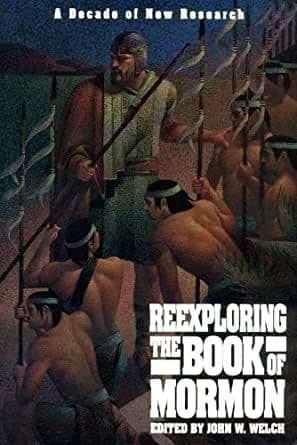Book
85 Chapters

3 Nephi 4:28 “Their leader, Zemnarihah, was taken and hanged upon a tree, yea, even upon the top thereof.”
Third Nephi 4:28-33 recounts in considerable detail the execution of Zemnarihah, the captured leader of the defeated Gadianton robbers. It has recently been suggested that this public execution followed ancient ceremony and law. The text reads:
Their leader, Zemnarihah, was taken and hanged upon a tree, yea, even upon the top thereof until he was dead. And when they had hanged him until he was dead they did fell the tree to the earth, and did cry with a loud voice, saying: May the Lord preserve his people in righteousness and in holiness of heart, that they may cause to be felled to the earth all who shall seek to slay them because of the power and secret combinations, even as this man hath been felled to the earth (3 Nephi 4:28-29).
After the Nephites had chopped down the tree on which Zemnarihah had been hanged, they all cried out “with one voice” for God to protect them. Then they sang out “all as one” in praise of God (3 Nephi 4:30-33). Is there some kind of ritual involved here? Several evidences point to an ancient background for this execution. Consider these few items.
First, notice that the tree on which Zemnarihah was hung was felled. Was this ever done in antiquity? Apparently it was. For one thing, Israelite practice required that the tree upon which the culprit was hung be buried with the body. Hence the tree had to have been chopped down. Since the rabbis understood that this burial should take place immediately, the Talmud recommends hanging the culprit on a precut tree or post so that, in the words of Maimonides, “no felling is needed.”1
Second, consider why the tree was chopped down and buried. As Maimonides explains: “In order that it should not serve as a sad reminder, people saying: ‘This is the tree on which so-and-so was hanged.’ “2 In this way, the tree became associated with the person being executed; it came to symbolize the culprit and the desire to forget him or her. By way of comparison, the Nephites identified the tree with Zemnarihah and all those like him, that his infamy might not be forgotten, when they cried out: “May [the Lord] cause to be felled to the earth all who shall seek to slay them, . . . even as this man hath been felled to the earth.”
Third, the text suggests that the Nephites understood Deuteronomy 21:22 as allowing execution by hanging—a reading that the rabbis saw as possible. While they generally viewed hanging as a means only of exposing the dead body after it had been stoned, they were aware of a Jewish penalty of “hanging until death occurs.” For example, there were rare Jewish instances of hanging: Seventy women were “hung” in Ashkelon. Eight hundred Pharisees were crucified by Alexander Jannaeus the High Priest,3 but the rabbis rejected that means of execution, since this was “as the government does”4 and the rabbis at that time wanted to keep as much distance as possible between Jewish and Roman practices.
Fourth, observe that the ancient idea of fashioning a punishment that fits the crime was carried out here. For example, if a thief broke into a house, he was to be put to death and “hung in front of the place where he broke in.”5 Ancient punishments were often related symbolically to the offense. Likewise, the punishment for a false accuser was to make him suffer whatever would have happened to the person he had falsely accused (see Deuteronomy 19:19). In Zemnarihah’s case, he was hung in front of the very nation he had tried to destroy, and he was felled to the earth just as he had tried to bring that nation down.
Finally, the people all chanted loudly, proclaiming the wickedness of Zemnarihah, which may be reminiscent of the ancient practice of heralding a notorious execution. Deuteronomy 19:20 says that “those which remain shall hear, and fear, and shall henceforth commit no more any such evil among you.” How was this to be accomplished? Rabbi Jehudah explained: “I say that he is executed immediately and messengers are sent out to notify the people.”6 Indeed, public matters, such as the execution of a rebelling judge (see 3 Nephi 6:22-28), had to be heralded.7 An even clearer example of heralding in the Book of Mormon is found in Alma 30:57, where the results in Korihor’s case were heralded abroad. In both these cases, the apparent requirement of publishing the wickedness of the culprit was satisfied, so that all who remained would “hear and fear,” and the evil would be removed from among God’s people.
Based on research by John W. Welch, November 1984.
1. Maimonides, Sanhedrin, XV, 9; see also Babylonian Talmud, Sanhedrin, VI, 6.
2. Maimonides, Sanhedrin, XV, 9.
3. Josephus, War I, 97.
4. TB, Sanhedrin VI.5-6.
5. Code of Hammurabi, section 21.
6. TB, Sanhedrin X.6.
7. Ibid.
Book
85 Chapters
Items in the BMC Archive are made publicly available for non-commercial, private use. Inclusion within the BMC Archive does not imply endorsement. Items do not represent the official views of The Church of Jesus Christ of Latter-day Saints or of Book of Mormon Central.